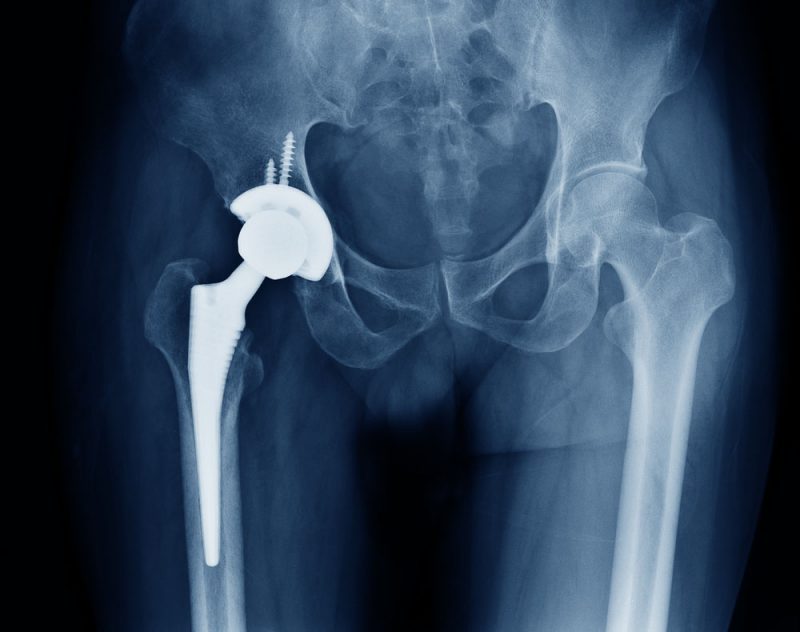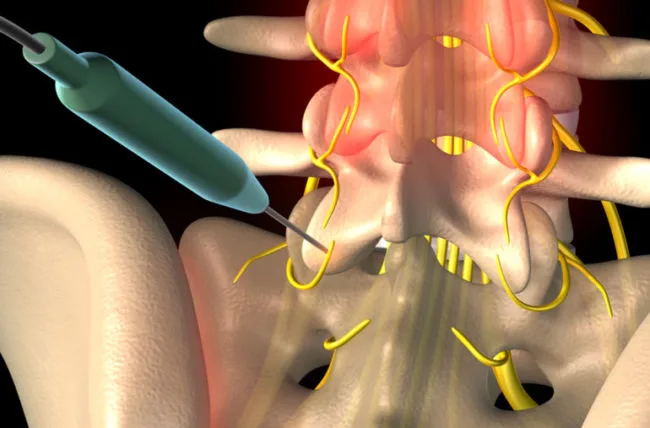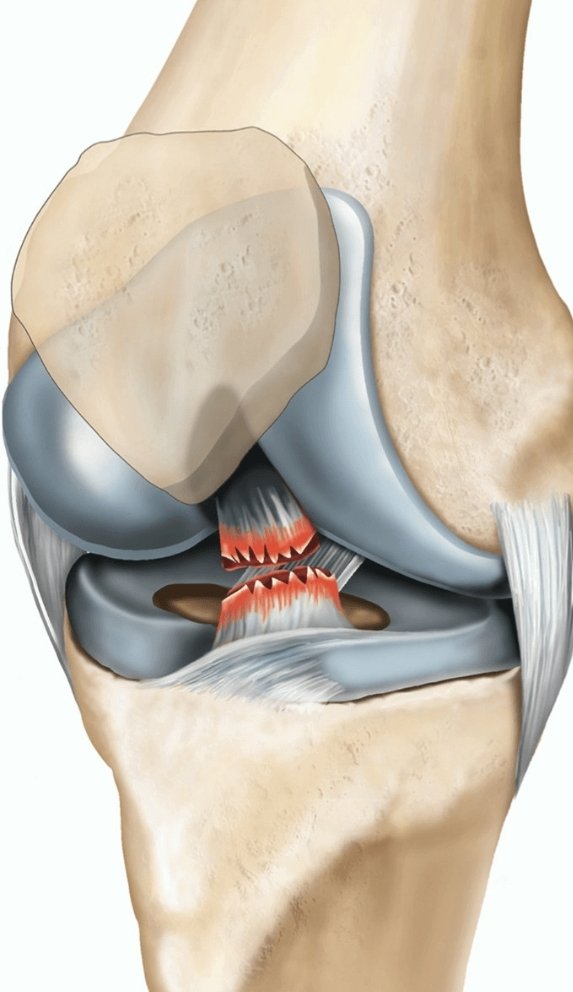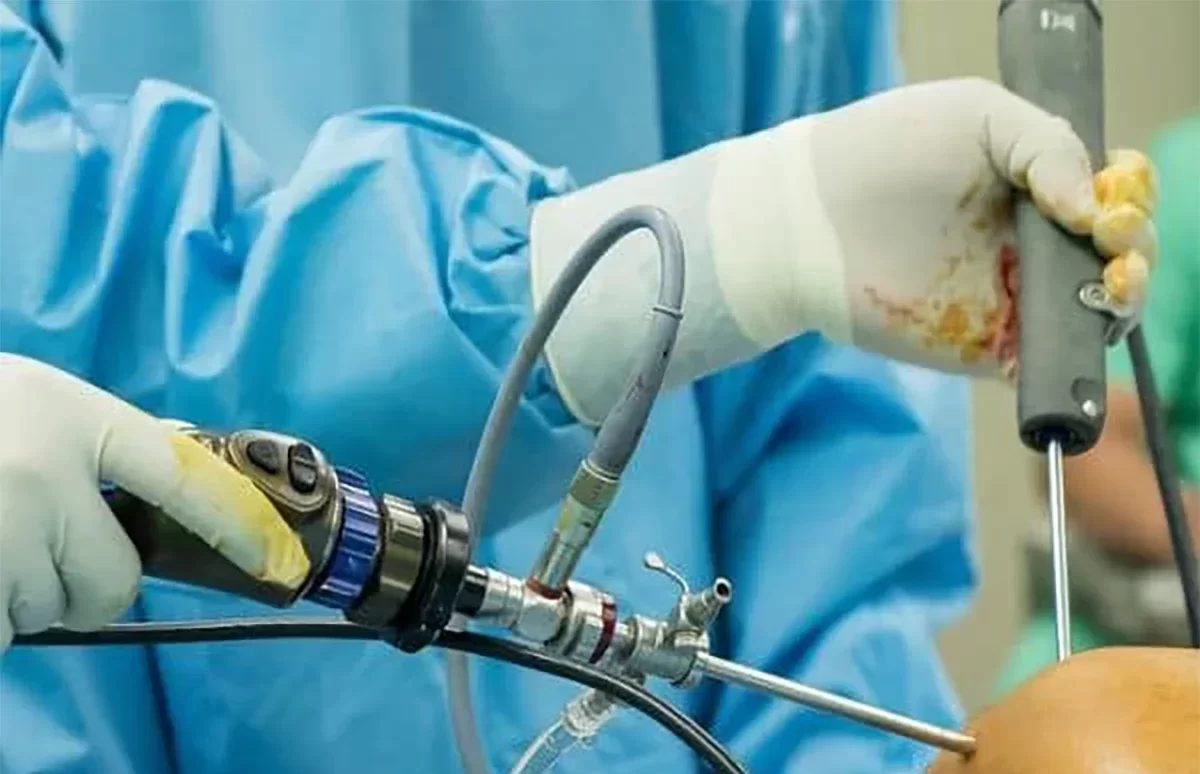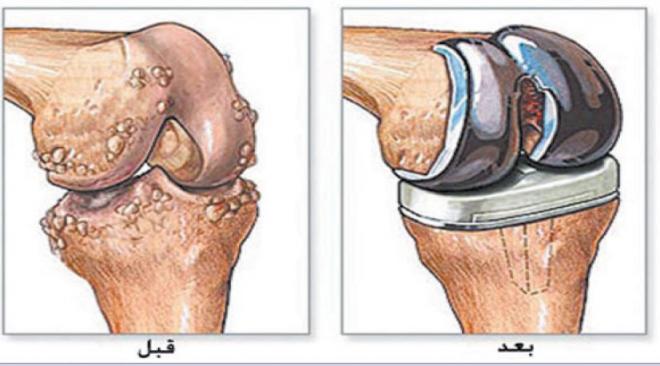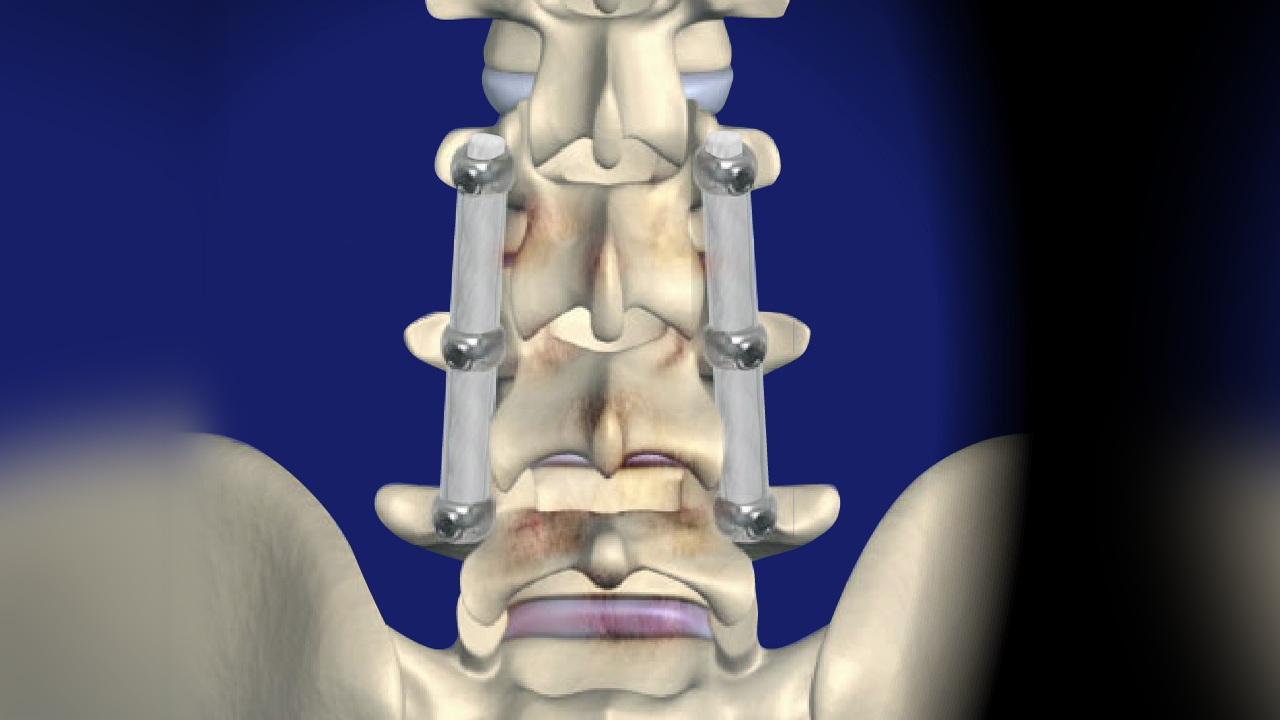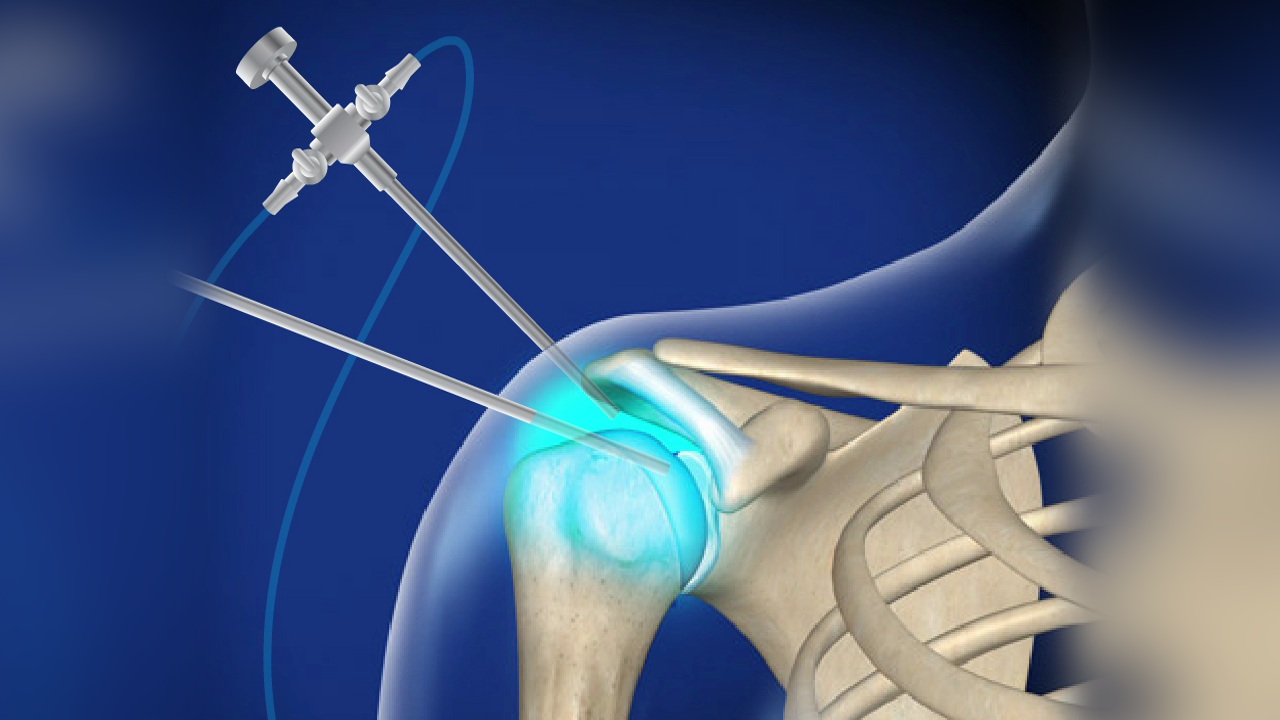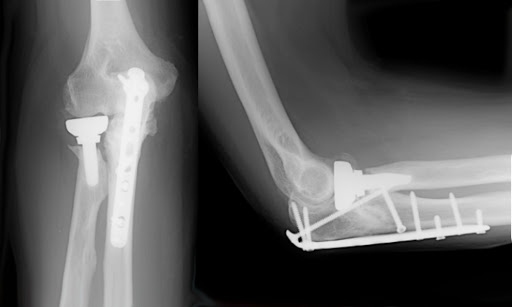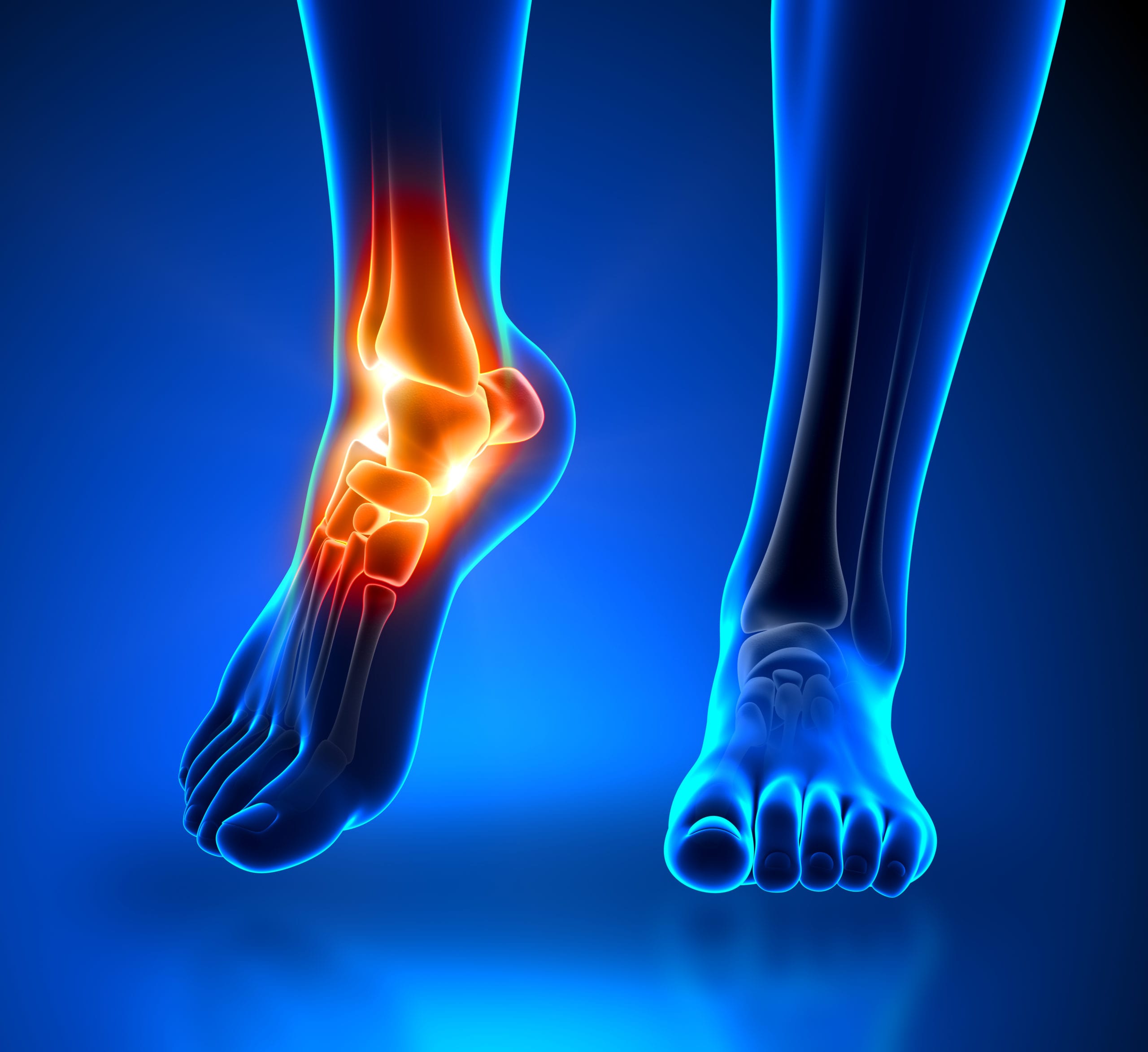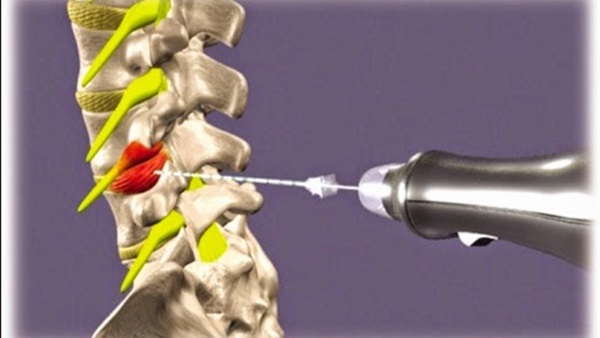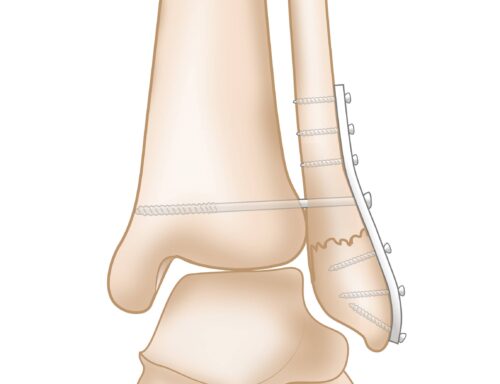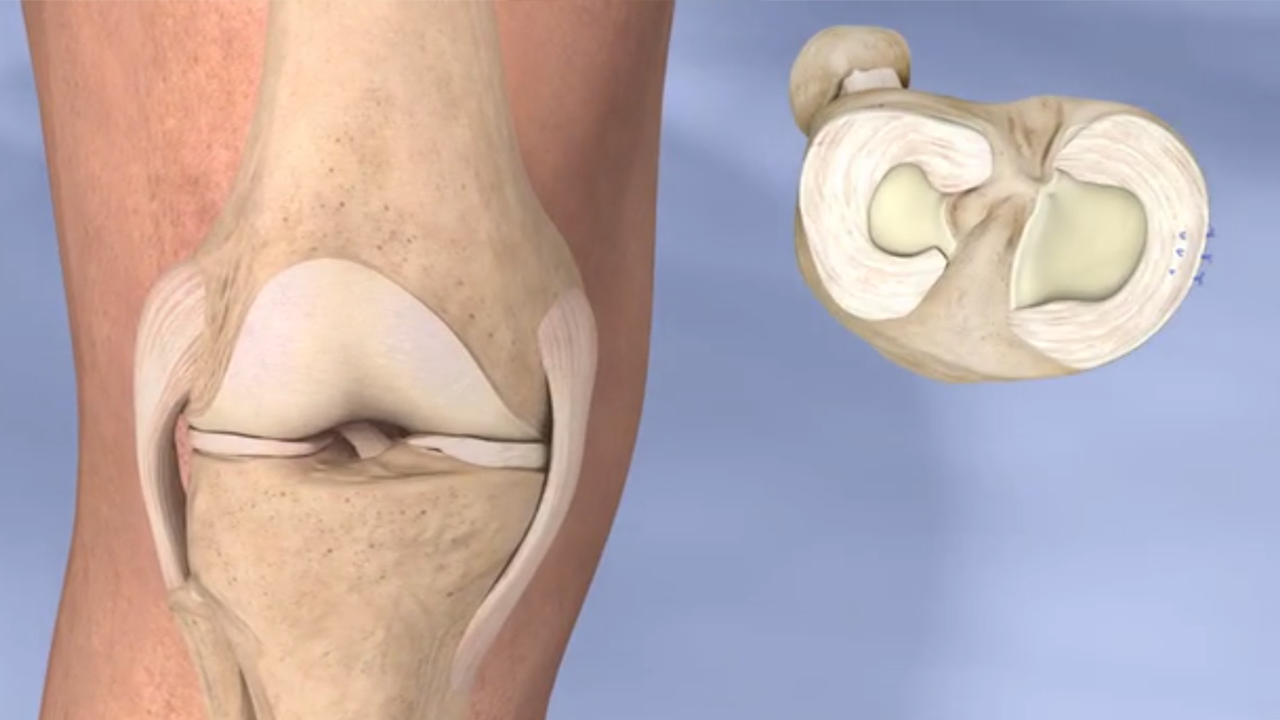Sciatic Nerve Surgery
Sciatic Nerve Surgery, Sciatica is a nerve-related condition that affects an individual’s state, causing severe pain in the sciatic nerve. To learn more about sciatica surgery, we provide you with this detailed article, which includes comprehensive information about the causes, symptoms, treatment of sciatica, and the difference between it and disc herniation. Follow us to stay updated on everything new in this matter.
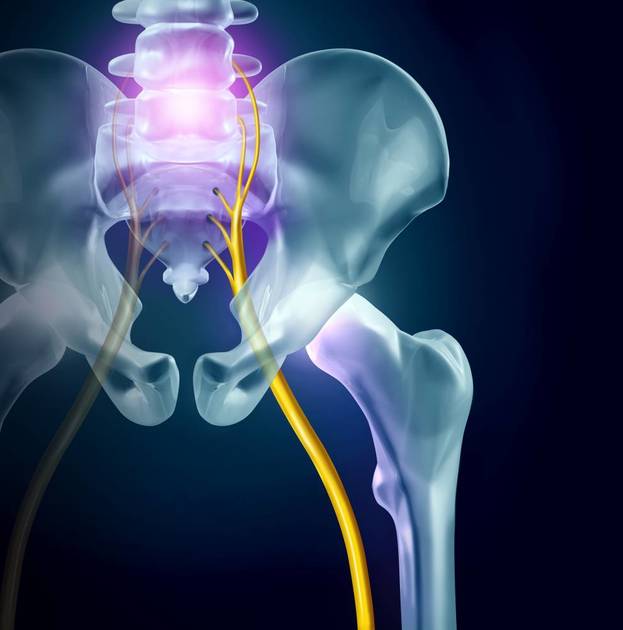
Sciatic Nerve Surgery
“We offer you comprehensive care and high expertise in sciatica surgery, performed by Dr. Amr Amal and his specialized team in his clinics.”
Back injuries vary, especially those affecting the vertebrae in the spine, which can impact the patient’s condition and limit their natural movement. Inflammation of the sciatic nerve, commonly known as sciatica, is a condition that affects the back’s cartilage, specifically the lower vertebrae of the spine.
Sciatica occurs due to inflammation in the sciatic nerve, which is the largest and longest nerve in the body, as it starts from the lower part of the back and extends down to the foot. Therefore, any disease affecting it results in pain in the lower back, buttocks, down to the leg, hindering the person’s movement and making it difficult to sit, stand, or walk.
The doctor may diagnose the patient, evaluate their condition, and determine the required treatment. In some cases that do not respond to other treatment methods, the only solution is to undergo sciatica surgery, which we will explore in more detail in the following paragraphs.
Causes of Sciatica
Sciatica pain is common and affects many people at different ages, which is due to several possible causes, including:
- Inflammation of the sciatic nerve due to pressure on it.
- Exposure to disc herniation.
- An injury in one of the spine’s vertebrae.
- A cancer injury in the spine’s vertebrae.
- Sciatica is common during pregnancy.
- Suffering from the piriformis syndrome.
For more details about sciatica, its causes, and related information, we recommend reading this article.
Sciatica Symptoms
Sciatica can be distinguished by the symptoms that appear on you, quickly alerting you to consult your doctor, undergo the necessary examinations, and specifically examine the inflammation of the sciatic nerve to identify the main cause that led to sciatica and determine the appropriate treatment based on the patient’s condition.
The initial symptoms that may appear on a person with sciatica include:
- The patient may start to feel pain in the lower back extending down to the legs.
- Pain reaching the fingertips, with discomfort when walking.
- Muscle weakness and an inability to perform daily activities normally.
- Numbness and difficulty in moving the leg, sitting, and bending the back.
More serious symptoms:
The severity of sciatica symptoms, which affect the patient’s condition, may develop and include:
- Feeling severe pain in the leg.
- Significant difficulty in controlling urine and bowel movements.
- Persistent pain despite resting.

How to Diagnose Sciatica
Initially, the patient undergoes a physical examination by the doctor, which includes testing muscle strength and involuntary responses. For example, the doctor may ask the patient to walk on their tiptoes or heels, rise from a squatting position, or lie on their back and raise their legs one at a time, as sciatica pain increases during these movements.
If the patient is experiencing severe and persistent pain, the doctor may request the following tests:
- X-rays: X-rays can reveal overgrowth in the spinal vertebrae causing pressure on a nerve.
- Computerized Tomography Scan (CT scan): During this test, a dye is injected into the spinal canal, followed by X-ray imaging. The dye then moves around the spinal cord and spinal nerves, making them visible in the images.
- Magnetic Resonance Imaging (MRI): This procedure uses a strong magnetic field and radio waves to create cross-sectional images of the back, producing detailed images of bones and soft tissues, showing disc herniation and nerve compression.
- Electromyography (EMG): This test measures the electrical pulses from the nerves and the responses of the muscles to them, as well as accurately determining the severity of nerve root damage.
Does Sciatica Lead to Paralysis?
Sciatica symptoms can gradually fade away without medical intervention, or through medication, physical therapy, and conservative treatment. However, if symptoms increase and sciatica is neglected, nerves can be damaged, potentially leading to loss of sensation in the leg, which in rare cases, can lead to paralysis. For more details regarding the risks associated with sciatica, we recommend reading this article.
What is the difference between sciatica and disc herniation?
Some people confuse sciatica with disc herniation, but there is definitely a difference between sciatic nerve inflammation and disc herniation. The difference lies in the following:
Disc Herniation: A person can experience a disc herniation due to damage to the cartilage lining the vertebrae of the spine. This results in a tear in the cartilage’s gelatinous casing, causing the solid core to protrude, which then presses on the nerve and, consequently, symptoms of disc herniation begin to appear.
Sciatica: Sciatica occurs when there is inflammation of the sciatic nerve, leading to sciatica as a result of pressure on the sciatic nerve. One of the causes of this pressure can be disc herniation, leading to pain, difficulty in movement, and numbness in the leg.
If you would like to learn about the clear differences between sciatica and disc herniation, and for more information, click here.

Sciatica Treatment
Sciatica treatment can be achieved through various therapies that help improve the patient’s condition and enable quicker return to daily activities. The methods of sciatica treatment include:
Physical Therapy: This helps relieve pressure on the sciatic nerve, bringing comfort to the patient. The doctor may design a program to prevent future injuries, which includes exercising to correct body posture, strengthen the core muscles, and improve range of motion.
Medication: This mostly involves the use of pain relievers, anti-inflammatory drugs, muscle relaxants, which help to reduce pain intensity, in addition to antidepressants, antispasmodics, and corticosteroids.
Conservative Treatment Methods: These help improve the patient’s condition and provide adequate rest. Cold water compresses can be used to reduce nerve swelling. Attention to movement and engaging in certain exercises can also help alleviate pain.
Steroid Injections: Some cases respond to corticosteroid medication injections in the area surrounding the nerve root causing pain. Typically, a single injection can relieve pain, and up to three injections can be administered per year.
Surgery: A doctor might perform surgery to remove a bone spur or part of a herniated disc that is pressing on the nerve. Surgery is usually considered if sciatica results in severe weakness, loss of bowel or bladder control, or if the pain does not improve with other treatments.
When is Sciatica Surgery Necessary?
“Regain your activity and independence with the innovative and effective sciatica surgery offered by Dr. Amr Amal.”
There are various treatments for sciatica, and they can be used to improve the condition of sciatica inflammation, allowing the patient to start recovering from the pain and return to normal activities. This is generally available to those with sciatica in the early stages. However, if the symptoms worsen, the patient may require surgical intervention.
Does Surgical Procedure Help in Treating Sciatica?
Surgical intervention in cases of sciatica is usually the last resort after trying other treatment methods that help improve the patient’s condition over time. If the patient does not experience change and recovery is not happening at a normal pace, then surgical intervention becomes important and beneficial. Certainly, the patient will feel more comfortable and recover better post-surgery.
What is the sciatic nerve cut procedure?
The sciatic nerve is the largest and longest among the body’s nerves, starting from the lumbar vertebrae in the lower part of the back down to the feet. The thickness of the sciatic nerve is equivalent to two fingers, and there are several factors that affect a person’s susceptibility to inflammation of the sciatic nerve, also known as sciatica. Therefore, the sciatica procedure involves cutting the sciatic nerve, which prevents pain signals from reaching the brain. The procedure used in this operation is known as nerve root cut, which immediately alleviates the pain, with effects lasting from 9 months to several years. This is until the nerve heals and is able to transmit pain signals again, at which point the procedure can be repeated if necessary. We will learn more about this in detail in the following paragraphs.

How to perform the sciatica procedure
The sciatic nerve cut surgery is performed using various methods including radiofrequency and endoscopy, the latter being more common for such surgeries. The procedure involves cutting the roots that produce pain signals, causing severe pain for the patient.
Method of sciatica cut with endoscopy After performing the necessary examinations and determining the need for the patient to undergo sciatica surgery, the doctor begins to prepare the patient for the surgical procedure. The appropriate type of anesthesia is used, usually local anesthesia. A small incision is made in the affected area below the back to insert the endoscope and the special surgical tools. The affected sciatic nerve is cut to relieve the patient’s pain, as the nerve signals for pain no longer exist. The surgeon sterilizes the incision, dresses it, and the patient then returns to their room. Often, the patient begins to feel immediate improvement. Method of sciatica cut with radiofrequency waves
Sciatica is excised or cut through radiofrequency waves, which is a medical procedure in which the nerve roots are cut using an electromagnetic current. The steps include:
Anesthetizing the surgical area with local anesthesia, then making a surgical incision near the vertebrae, approximately a quarter of an inch in size. A fine needle is inserted through the surgical incision, then precisely placed at the tip of the nerve responsible for pain, with the aid of X-ray imaging. An anesthetic drug is injected, and then a radiofrequency wave current is connected to the tip of the needle to burn the nerve root. After the doctor finishes, the needle is removed, and then a small dressing is placed over the incision site. Usually, there is no need for stitches. Sciatica operation with laser
There is a medical procedure that uses laser for sciatica operations, which is considered one of the modern treatment methods that has proven its effectiveness in relieving sciatica pain and giving the patient a chance to return to normal life. The sciatica operation with laser is performed as follows:
No incision or wound is made in the person’s body during the laser operation. The doctor uses local anesthesia on the affected area. A low-frequency light beam is directed at the affected area. The laser turns into electromagnetic waves that treat the inflammation causing the pain. The procedure does not take a long time, and the patient can leave the hospital on the same day.
Advantages of Interventional Laser Therapy
There are a number of important advantages that have made surgical procedures using lasers so popular and widespread in various medical fields. Some of the most important advantages of interventional laser therapy include:
- No need to make a cut or incision in the affected area.
- The procedure takes no more than a third of an hour.
- Local anesthesia is used for the patient.
- In case of sciatic nerve treatment, no part of the vertebrae is removed.
- The neurologist can directly see and accurately target the nerves causing the problem, reducing the chance of affecting the surrounding healthy nerves.
- Provides a long-term relief from pain compared to other available options.
The only drawback of laser sciatic nerve surgery is the duration of pain relief, which lasts less than a year. However, doctors prefer it in cases where the patient responds to treatment but slowly, so it is used to help them temporarily get rid of pain.
Post-Sciatic Nerve Surgery Care
The actions taken by the patient after sciatic nerve surgery greatly help in a quick recovery after the surgery. The instructions provided by the doctors regarding sciatic nerve surgery are:
- Avoid strain for 48 hours after the operation, which improves the patient’s condition.
- Do not expose the treated area to water or bathing for 24 hours.
- Use cold water compresses to help reduce swelling.
- Monitor the patient’s vital signs during the day after surgery.
Success Rate of Sciatic Nerve Surgery
The success rate of sciatic nerve surgery is very high, reaching up to 100% in many cases. The patient feels immediate improvement after the surgery or within just a few days, resulting in more comfort than before and a return to normal walking and movement, provided they follow the medical team’s instructions.
Risks of Sciatic Nerve Surgery
Most patients recover quickly after sciatic nerve surgery and continue to improve for many years if the surgery is performed through a minimally invasive procedure, making it one of the best methods for long-term treatment of sciatic nerve issues. However, like any surgical procedure, there are rare cases of complications, including:
- Nerve inflammation.
- Numbness in the leg.
- Infection.
- Persistent back pain.
- Bleeding at the surgical site.
Cost of Sciatic Nerve Surgery
The cost of surgical procedures can be determined based on several factors, including the surgeon performing the operation, their proficiency and experience in this type of surgery, the hospital where the surgery is performed, attention to cleanliness and sterilization, provision of medical care to the patient, and the type of surgery among other details that should be reviewed with the medical team before the surgery.
Does Sciatica Affect Walking?
“Consult Dr. Amr Amal for an accurate assessment and a personalized treatment plan to treat sciatica and regain your vitality and natural movement.”
Sometimes, as symptoms increase, sciatica can affect the leg and foot, causing severe pain that impacts the person’s ability to bend or walk, resulting in impaired movement. In such cases, it is essential to consult a specialist.
How to Treat Herniated Disc and Sciatica Without Surgery
There are various treatment methods for sciatica and herniated discs, with surgery being the last resort. However, there are several other ways to address these issues, including:
- Taking pain relievers and anti-inflammatory medications.
- Performing suitable physical exercises for the patient’s condition.
- Maintaining a lower weight and following an appropriate diet.
- Utilizing physical therapy methods that help in treating sciatica.
- Adopting conservative treatment that reduces pressure on the back vertebrae.
One of the Most Skilled Doctors for Sciatica Surgery
Dr. Amr Amal is one of the most skilled doctors performing sciatica surgery, distinguished by his high proficiency and extensive experience in this field. He uses the latest medical techniques and tools to ensure that patients achieve optimal results and a successful surgery.
Dr. Amr possesses unique skills that enable him to provide superior medical care to his patients. He treats them with kindness and respect, providing the necessary psychological support during this sensitive procedure. Dr. Amr works tirelessly to meet the individual needs of each patient and pays attention to the finest details to ensure the complete success of the surgery.
Thanks to his vast experience and high professionalism, Dr. Amr can handle various challenges and manage complex cases efficiently. He ensures the highest levels of cleanliness and safety in the operating room and follows strict guidelines for infection control.
Given Dr. Amr’s commitment to improving the health and quality of life of his patients, he provides them and their families with necessary information and guidance before and after the surgery. He answers their questions honestly and patiently, ensuring they are fully aware of the treatment process and the expected recovery time.
Dr. Amr Amal is a prominent figure in the field of sciatica surgery, enjoying a good reputation among patients. He is dedicated to providing the best medical services and improving the quality of life of his patients through modern techniques and personalized care.

